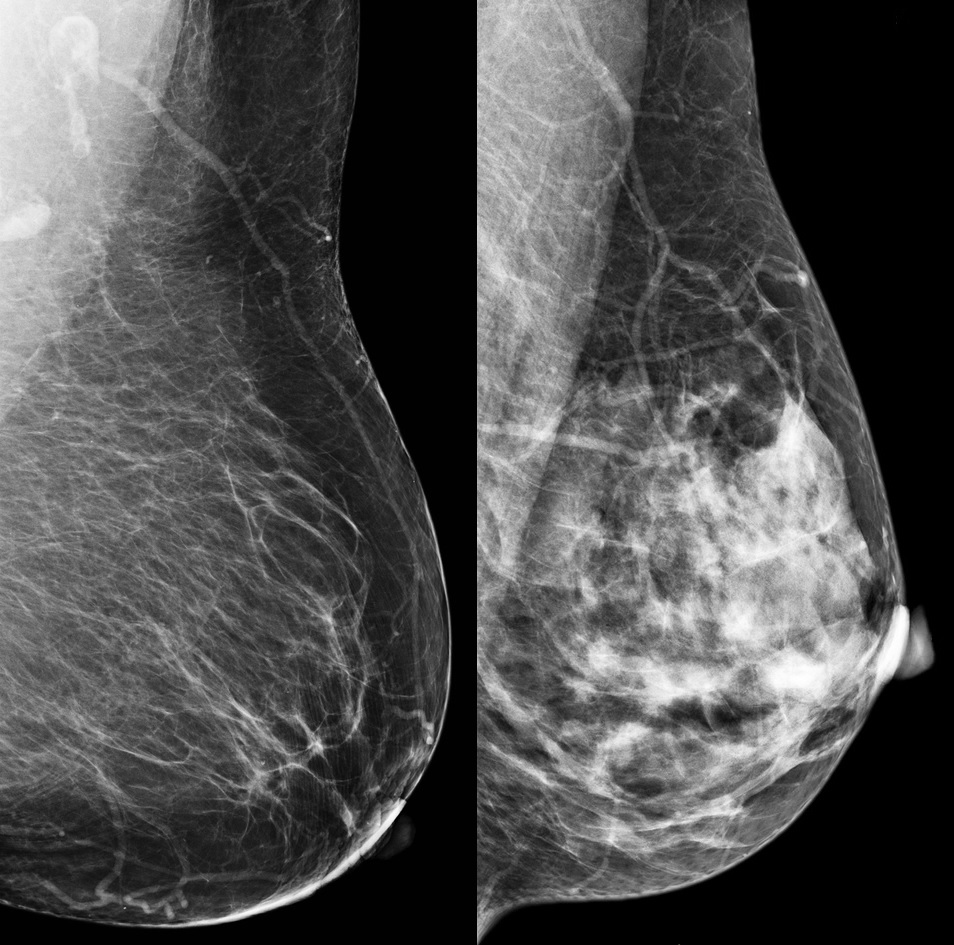
Two mammograms depict breast density. The greater the density, the denser the breast tissue. Greater density is associated with a higher risk of developing breast cancer. Image courtesy of the Centers for Disease Control.
The United States Preventive Services Task Force recommends that women who are 50 to 74 years old and at average risk for breast cancer get a mammogram every two years. Younger women should consult their doctors about when to start and how often.
A mammogram is an X-ray of the breast. The greater the density of breast tissue, the more likely it is to appear white (as opposed to gray). Density is affected by the amounts and distribution of different types of tissue in the breast: fibrous, glandular and fatty.
It has long been known that women with dense breasts have a higher risk of getting breast cancer compared to women with nondense breasts, but the underlying biology has remained a mystery.
Swedish researchers have published research suggesting a possible explanation: Dense breast tissue contains higher levels of proteins associated with cancer development. In other words, the abundant proteins might be acting like a kind of fertilizer, spurring processes like inflammation, formation of blood vessels and cell growth that can promote cancer development.
At this point, however, the data indicates only a correlation, not cause and effect, though the links between protein levels and physiological differences in tissue are strong enough that researchers believe they are causal.
If so, future research may look for therapeutic ways to reduce targeted protein levels and reduce the risk of cancer developing.
— Scott LaFee